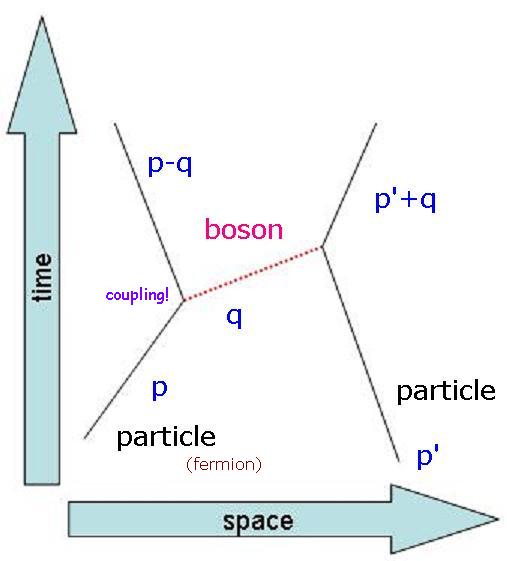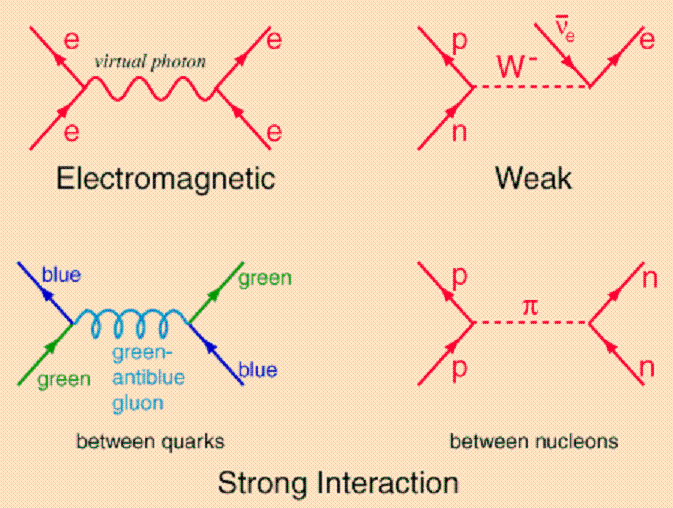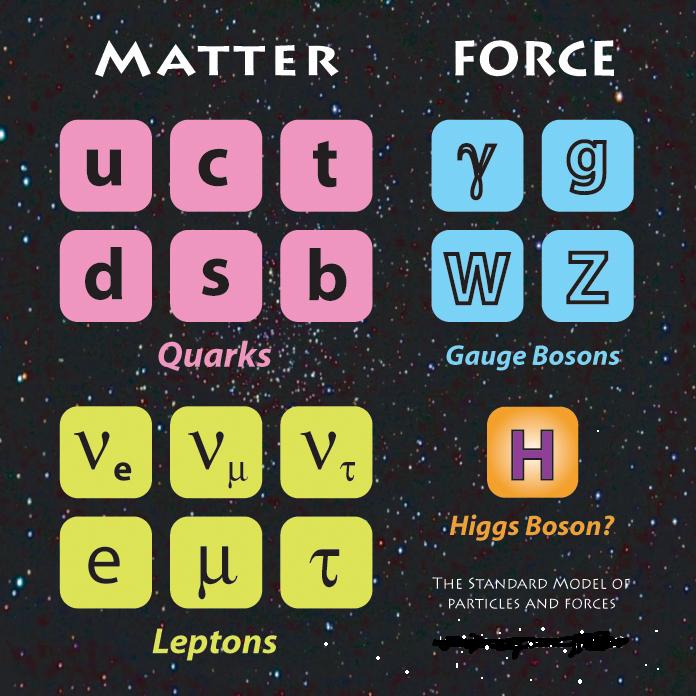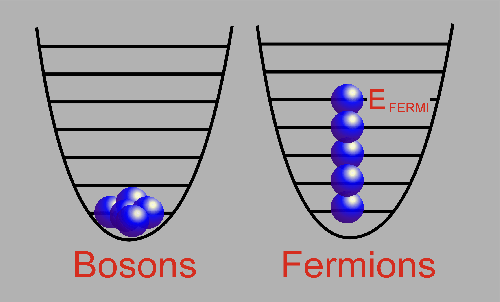
In relativistic quantum field theory (1930), there are two main types of particles: fermions, which are conserved in number, and of which things like matter can be made; and bosons, which can appear from nothing and disappear into nothing, and of which forces are made. For each of the three forces, the electromagnetic, strong and weak, we have sets of “force bosons.”
 |
 |
Photons couple to charge, weak bosons couple to weak charge, and gluons couple to color. This entire description of matter and forces is called The Standard Model....


Two important things to remember about bosons... not only can they appear out of nothing and vanish back into nothing, but also any number of bosons can occupy the same physical state. Unlike fermions, each of which has to be in its own unique state, bosons can and do “condense” to the same spot and state.
Also important: in applying quantum field theory you can quantize, or bosonize classical fields, or you can retain them in the dynamical equations as classical fields, which is particularly easy to do if the field is scalar, like φ(r).
Nomenclature: the particles that feel the strong force are called hadrons. There are two kinds of hadrons, namely baryons which are fermions made of three quarks, and mesons, which are bosons made of quark-antiquark pairs. It was the attempt to understand the hadrons that led to the quark model in the 1960s.